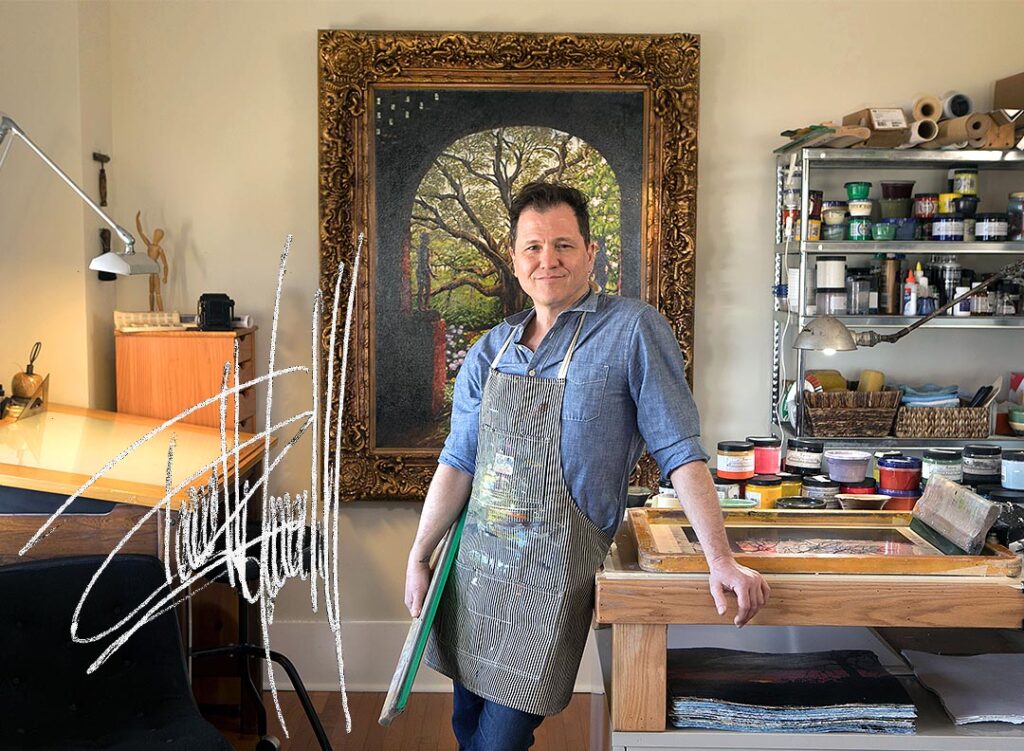
i'm an old-school screen print artist
Reduction Method Screen Printing, or “old-school,” means using methods from the early 1900s, before photographic stencils were invented, when every part of the process was done by hand. Many of these earlier processes have been sadly forgotten and lost to time. It’s the same methods once used to mass-produce colorful show cards, large travel posters and world war propaganda campaigns.
Determined to revive a lost art and learn what it had to teach me has led to the discovery of a plethora of wonderful creative options that simply do not exist using modern methods. Printmaking, especially screen-printing as an art form appeals to me because it is very much a combination of engineering and art. The process requires machinery, calibration, precise measurements, chemistry and ingenuity while leaving room at each stage for trial-and-error and experimentation.
Reduction Method Screen Printing definitely leads to more “happy accidents.” Effects, only revealed when I take a left-turn somewhere in the process. I try to reproduce these effects in subsequent art pieces. Each piece, building on the techniques and lessons learned from the piece before. Screen printing via the lost art route, teaches me patience, perseverance and more often than I’d like to admit, humility.
Art comes to me. I rarely go looking for it.
When I’m struck by an idea for an art piece; it’s like waking up from a dream that you just can’t shake. Often it’s a thought or a simple phrase overheard in casual conversation; a flashing moment captured by a random glimpse out the passenger window – it stays with me until I put it down in a way that is concrete.
Most often, what inspires me isn’t exactly what I heard or saw, but more of what I think it might have been. The goal is to translate this concept into a work that is meaningful, beautiful and leaves the viewer with more questions than answers. That’s what good art does; it starts a conversation without words and asks, “So, what do you think?”
Then and Now
Terrell Thornhill was raised in southern Mississippi in a land he says was “devoid of all culture.” Nevertheless, he is self-taught in his artistic disciplines and doesn’t remember a time when he did not want to be an artist. He has lived in middle Tennessee since 1993 and currently lives in the Arts District, downtown Nashville with his Australian Shepard, Shiloh.
